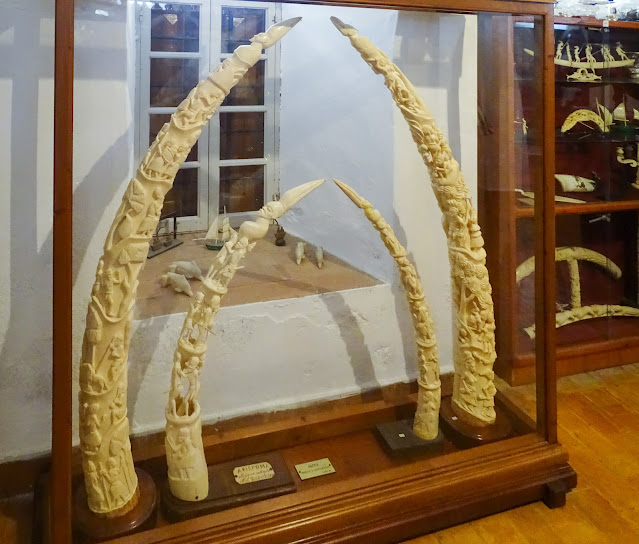
1 / RHODES
Rhodes is the largest of the Dodecanese islands of Greece and is also the island group's historical capital. Rhodes' nickname is The Island of the Knights, named after the Knights of Saint John of Jerusalem, who ruled the island from 1310 to 1522.
Historically, Rhodes island was very famous worldwide for the Colossus of Rhodes, one of the Seven Wonders of the Ancient World.
Today, it is one of the most popular tourist destinations in Europe.
The Medieval Old Town of the City of Rhodes has been declared a World Heritage Site.






















The Palace of the Grand Master of the Knights of Rhodes, also known as the Kastello is a medieval castle in the city of Rhodes. It is one of the few examples of Gothic architecture in Greece.
The palace was originally built in the late 7th century as a Byzantine citadel. After the Knights Hospitaller occupied Rhodes and some other Greek islands in 1309, they converted the fortress into their administrative centre and the palace of their Grand Master. In the first quarter of the 14th century, they repaired the palace and made a number of major modifications. The palace was damaged in the earthquake of 1481, and it was repaired soon afterwards. After the 1522 capture of the island by the Ottoman Empire, the palace was used as a command centre and fortress.
During the Italian rule of Rhodes, the Italian architect Vittorio Mesturino restored the damaged parts of the palace between 1937 and 1940. It became a holiday residence for the King of Italy, Victor Emmanuel III, and later for Fascist dictator Benito Mussolini, whose name can still be seen on a large plaque near the entrance.
The Archaeological Museum of Rhodes. The museum is housed in the monumental edifice that was the hospital of the Knights of Saint John. Construction of it was begun in 1440 and brought to completion in the time of the Grand Master d'Aubusson (1476-1503).
The Museum contains various collections of archaeological artifacts from various parts of Rhodes and the neighbouring islands.
Lindos Acropolis, is for most visitors the most impressive archaeological site on Rhodes. where are the ruins of the goddess Athena Lindia and temples from the 4th century BC, as well as the Propylaea, the great Hellenistic Stoa and the Byzantine chapel of Saint John. According to myth, the cult of Athena Lindia was pre-Hellenic. The sanctuary was approached by a rough flight of steps. After it was burnt down in 342 BC,
The present temple was built with the Propylaea and the monumental staircase. In the 3rd century BC the cult of Zeus Polieus was introduced, although Athena remained the principal deity of the sanctuary. In the Roman period the priest Aglochartos planted olive trees on the spot, and according to an inscription the Sanctuary of Psithyros was built close to the Temple of Athena (2nd c. AD).
South cape
2 / Day trip to SYMI
Symi, is a Greek island and municipality, it is mountainous and includes the harbor town of Symi and its adjacent upper town Ano Symi, as well as several smaller localities, beaches, and areas of significance in history and mythology.
The economy of Symi was traditionally based on the shipbuilding and sponge industries. The population reached 22,500 at its peak during that period. Symi's main industry is now tourism, and its permanent population has declined to 2,500, with a larger population during the summer.
Monastery of Archangel Michael, in Panormitis is 10 km southwest of Symi. It is believed to have been built during the years of the Turkish domination and has been reconstructed several times but it’s most important restoration was, done by Anastasis Karnavas between 1777 and 1873.
The Venetian style monastery has great artifacts, such as antique chandeliers, and an impressive silver icon of the Archangel, which is the Patron Saint of the island, as well as the protector of sailors.
3 / KOS
Kos or Cos is a Greek island, part of the Dodecanese island chain in the southeastern Aegean Sea. Kos is the third largest island of the Dodecanese by area, after Rhodes and Karpathos. The island measures 40 by 8 kilometres (25 by 5 miles).
4 / SAMOS
Samos, is located south of Chios, north of Patmos and off the coast of western Turkey, from which it is separated by the 1.6-kilometre wide Mycale Strait.
In ancient times, Samos was an especially rich and powerful city-state, particularly known for its vineyards and wine production.
It is home to Pythagoreion and the Heraion of Samos, a UNESCO World Heritage Site that includes the Tunnel of Eupalinos (or Eupalinian aqueduct), a marvel of ancient engineering.
Samos is the birthplace of the Greek philosopher and mathematician Pythagoras, after whom the Pythagorean theorem is named, the philosophers Melissus of Samos and Epicurus, and the astronomer Aristarchus of Samos, the first known individual to propose that the Earth revolves around the sun.
This region and village will be partially
burned-out the day after I visited it !
Fire fighting aircraft
Continue your journey :
- Central Greece and Corfu island is here - For lovers of archeological sites... i.e."old stones" is here - On the road and in town, drink and food, campsites is here












































































































